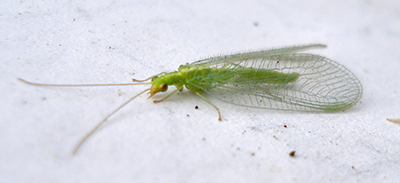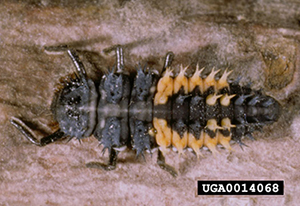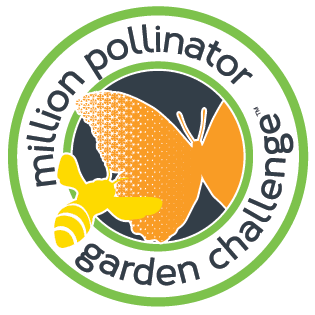Information
Join us for tips, helps, questions and answers about the gardening world. Monitored by a Certified Master Gardener but wisdom is shared by ALL.
Members: 43
Latest Activity: Nov 26, 2023
Gardener's Corner
GREETINGS MEMBERS, GUESTS AND VISITORS.
Chief Walks In Shadows is a Florida State Master Gardener.
He will post information that he feels will benefit everyone as a whole. But basically this will be a question and answer group.
IF A GROUP MEMBER KNOWS THE ANSWER TO ANY QUESTION PLEASE FEEL FREE TO ANSWER.
Chief Walks will answer all questions asked to him directly. He has over 40 years of experience. And a sizable personal research library.
We are here to meet ALL of your gardening questions and/or related subjects.
FYI:
If an article, or post to the 'Comment Wall',
is larger than 4000 characters long
it will have to be created as a page.
See 'Pages' to the right. ----->
LIVE GREEN. PROTECT OUR MOTHER EARTH AND OUR HUMAN FAMILY.
The USDA Hardiness Zone Map divides North America into 11 separate zones; each zone is 10°F warmer (or colder) in an average winter than the adjacent zone. If you see a hardiness zone in a catalog or plant description, chances are it refers to the USDA map. To find your USDA Hardiness Zone or use the map below.
Comment Wall
Comment
-
Comment by Chief Walks on July 5, 2018 at 10:30am
-
Comment by Chief Walks on June 29, 2018 at 6:11pm
-
Comment by Chief Walks on June 23, 2018 at 10:15am
-
Comment by Chief Walks on May 31, 2018 at 6:40am
-
Three Sisters Planting
The first companion planting I tried was a Native American method called Three Sisters. The technique consists of corn, beans and squash planted close together in the same garden space. The corn is planted first to provide support for the beans, followed by squash which serves as a ground cover. Using this method, I was able to grow three vegetable varieties in the space that would have housed only one using traditional crop rows.
To plant the Three Sisters, I used the mouth of a 5 gallon bucket to imprint a circle in the soil, leaving enough room in between circles to walk. Then I sowed corn seeds (Dorinny Sweet and Country Gentleman are my favorite) 6” apart in the outline of the circle. When sprouts appeared, I planted bean seeds on either side of each corn sprout. Any variety of climbing beans will work. I used a combination of lima beans and pole beans. Squash is planted last, after the beans have emerged. I sowed squash seeds in the middle of the circle so that the vines would extend out and provide ground cover. A vine type of squash works best.
Other Companion Planting Ideas
Many vegetables grow well together. Take into consideration what each plant has to offer the others, then plan the garden space accordingly. Taller crops such as tomatoes and peppers can serve as much needed shade for tender leaf lettuce varieties, which can in turn serve as a ground cover to deter weeds and retain moisture.
Interplant vegetables within the same family, such as brassicas, to add variety and additional plantings. Instead of spacing rows for each variety, I plant cabbages, kale, and Brussels in a staggered pattern. The plants fill in the space completely, leaving just enough access room to harvest without wasting precious space. I have almost doubled my brassica planting by using this method.
Root vegetables like carrots and radishes can share space with cabbages and broccoli. I like to sow Half Danvers and Early Scarlet radishes around my brassica seedlings at the time of transplant in early spring. Radishes will be mature and be harvested before the carrots, leaving plenty of room for the carrot roots to flourish.
Most herbs companion well with other vegetables, and some herbs may act as natural pest control for the plants they share space with. Flowering herbs will also add beauty while attracting pollinators. Dill, chives, bee balm, basil and parsley may be planted in corners and boarders around the garden. Edible flowers such as nasturtium and marigolds are beneficial to cucumbers and squash varieties by attracting bees. Nasturtium is also believed to be an effective deterrent for unwanted insects.
-
Comment by Chief Walks on May 30, 2018 at 1:30pm
-
Comment by Chief Walks on May 25, 2018 at 8:21am
-
The Best Planting Tip I Never Shared!
I’ve used this tip for years but honestly never think about sharing.
This tip is SO SIMPLE: It is soaking root bound plants before planting. Very simple, but very important.
The big problem with container plants is that they get root bound. Roots naturally grow out and down (mostly out) away from the plant. When the roots of a plant in a pot reaches the wall of a pot, it has nowhere to go and will begin circling the perimeter of a pot over and over again. Almost any gardener who has brought home a new plant from a nursery has seen how a container plant can get root bound. It’s best to avoid plants in this condition, but often gardeners don’t have that option.
I had known how to direct the roots away from the plant using a root hook, or by scoring the sides of the roots with a sharp blade. However, what I did not realize was that root bound plants often become so dense, they will not absorb water. The density of tangled roots in a container plant can make the plant hydrophobic—it literally sheds water. Think about a dry sponge. When you first stick it under the faucet, water bounces off of it. So if you simply place that root bound plant in the ground and water it, water will more than likely run off the root ball and move toward the less dense soil around it. Even if you water it, the plant may not be getting the water.
How do you deal with this problem? The idea is to soak the plant for several minutes in water prior to planting. When you plant, fill up a large bucket with water, preferably rainwater since it does not have any of the chlorine or other chemicals of municipal water. Take the plant out of its pot and gently pull any encircled roots away from the plants. Then set the root ball in the bucket of water. Let it soak for anywhere from 30 seconds to three minutes, or until air bubbles stop coming out of it. This deep hydration actually reverses the plant’s hydrophobia. When you install a sopping wet root ball into the ground, the dry soil around it actually clings to the root ball by osmosis, creating a better soil to root contact. This technique is especially good for container trees. If the plant is that large, consider filling a wheel barrow full of water.
Want to really baby that plant? Here’s my own little spin on this trick: soak the root ball in a bucket of freshly brewed compost tea. Compost tea is essentially compost-brewed water that is aerated for 24 hours and mixed with a bit of molasses (or other sugar). Compost tea takes the beneficial bacteria and fungus present in compost increases them exponentially by aeration and sugars. These bacteria and fungus are critical in root establishment. Soaking your new plant in compost tea literally loads the root ball with beneficial soil microorganisms right before it gets planted.
Next time you plant, have a bucket of rainwater or compost tea by your side. I promise, you’ll notice a difference.
-
Comment by Chief Walks on May 9, 2018 at 7:39am
-
Comment by Chief Walks on March 30, 2018 at 8:14pm
-
Comment by Chief Walks on March 9, 2018 at 8:51am
-
Beneficial Insects: Lacewings and Ladybugs

An adult green lacewing.
Beneficial insects are an important part of integrated pest management (IPM) in your Florida-Friendly landscape.
Beneficials pollinate plants, contribute to the decay of organic matter, and attack other insects and mites that are considered to be pests. They can do a lot for a garden, and attracting and safeguarding them will help your landscape thrive.
The best thing you can do for beneficial insects is learn to recognize them. Adult lacewings and ladybug beetles are easy to identify, but their immature forms look entirely different.
Lacewings
Lacewings are considered beneficial insects because they eat aphids and other pests, and they don’t bite or sting. The green lacewing is proficient—in the larval form—at attacking pests like aphids, scale insects, whiteflies, and others. There are actually 22 species of green lacewings found in Florida and they belong to the Chrysopidae family. Lacewings can be ordered from beneficial insect providers for gardeners to use in their own landscape.
Female lacewings carefully choose the spots where they will lay their eggs; they pick a place close to an aphid colony. Each egg is laid on the tip of a hair-like stalk. This helps prevent the newly hatched larvae from eating their siblings. Once hatched, the larvae feed voraciously on pests. Lacewing larvae resemble small caterpillars, but move more quickly and have longer legs and mouthparts.
Adult lacewings are less than an inch long and light green, with two pairs wings that have a netted appearance. They have chewing mouthparts and feed on insects, nectar, pollen, and honeydew (a secretion that comes from aphids and some scale insects). These beneficial insects aren’t particularly great fliers and are commonly found near colonies of aphids.
Less commonly seen is the brown lacewing. Brown lacewings prey on pests during larval and adult stages of their lives. Brown lacewings eat soft-bodied insects, like aphids, mealybugs, as well as insect eggs.
Ladybugs

The larval form of a multicolored Asian lady beetle (Harmonia axyridis). Photo by Gerald J. Lenhard, Louisiana State University, Bugwood.org
Ladybugs, or ladybird beetles, are a family of insects often considered beneficial to humans, because most of them eat other insects that feed on our plants.
In Florida, there are about a hundred known species of ladybugs. The adults and larvae of most of them feed on soft-bodied insects like scales, aphids, whiteflies, and mites. Ladybug adults are distinctive, round, flying beetles that come in many colors. But the larvae look very different, and are often mistaken for pests.
Remember that many pesticides kill not only pest insects but also beneficials. If you do use a pesticide, choose one that targets only the pests you’re having trouble with. Finally, provide the pollen and nectar sources that beneficial insects like. Try selecting a wide variety of plants with many small flowers that bloom at different times of the year.
-
Comment by Chief Walks on March 8, 2018 at 7:28am
-
Planting and Care for Million Bells Calibrachoa
Pages (186)
- HARVESTING TIPS
- Three Sisters
- Growing Vegetables Through the Seasons With Succession Planting
- Growing White Sage
- How Much Should You Plant In A Year?
- Starting an Organic Garden
- Gardening with kids.
- How to Grow The Top 10 Most Nutritious Vegetables in Your Garden
- Don’t Wait! Plan Your Garden Now!
- The chicken for the small garden farm.
© 2024 Created by LadyHawkღ.
Powered by
![]()


You need to be a member of Gardener's Corner to add comments!